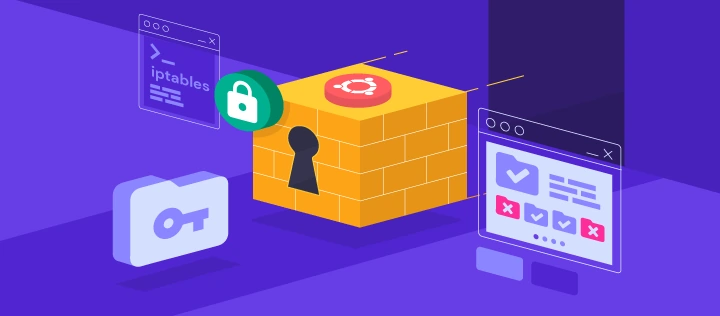Advanced Iptables Firewall Rules
Introduction
Securing your network is paramount, and understanding advanced Iptables firewall rules is key to achieving robust protection. In this article, we delve into the intricacies of crafting sophisticated rules to fortify your network defenses.
Implementing Iptables Rules
Strengthening Ingress Filtering
Enhance your network security by implementing precise rules for incoming traffic. Craft rules that explicitly allow or deny specific IP addresses or ranges. This approach ensures that only authorized entities can access your network resources.
# Allow traffic from a specific IP address
iptables -A INPUT -s 192.168.1.1 -j ACCEPT
# Deny traffic from a specific IP range
iptables -A INPUT -s 10.0.0.0/24 -j DROP
SSH Brute-Force Protection
Guard against SSH brute-force attacks by limiting login attempts within a specific timeframe.
# Limit SSH login attempts
iptables -A INPUT -p tcp --dport 22 -m conntrack --ctstate NEW -m recent --set
iptables -A INPUT -p tcp --dport 22 -m conntrack --ctstate NEW -m recent --update --seconds 60 --hitcount 4 -j DROP
Packet Matching Based on TTL Values
Implement rules based on Time-To-Live (TTL) values to identify and handle specific types of packets.
# Match packets with TTL less than 64
iptables -A INPUT -m ttl --ttl-lt 64 -j DROP
Syn-Flood Protection
Mitigate Syn-flood attacks by limiting the rate of incoming connection requests.
# Limit incoming SYN packets
iptables -A INPUT -p tcp --syn -m limit --limit 20/s --limit-burst 50 -j ACCEPT
iptables -A INPUT -p tcp --syn -j DROP
Mitigating SYN Floods With SYNPROXY
Utilize SYNPROXY to handle SYN floods more efficiently.
# Enable SYNPROXY
iptables -t raw -A PREROUTING -p tcp -m tcp --syn -j CT --notrack
iptables -A INPUT -p tcp -m tcp --tcp-flags FIN,SYN,RST,ACK SYN -j SYNPROXY --sack-perm --timestamp --wscale 7 --mss 1460
iptables -A INPUT -m conntrack --ctstate INVALID -j DROP
Block New Packets That Are Not SYN
Prevent non-SYN packets from establishing new connections.
# Block non-SYN packets for new connections
iptables -A INPUT -p tcp ! --syn -m conntrack --ctstate NEW -j DROP
XMAS Packets
Detect and drop XMAS packets to protect against certain types of scans.
# Drop XMAS packets
iptables -A INPUT -p tcp --tcp-flags FIN,SYN,RST,PSH,ACK,URG FIN,PSH,URG -j DROP
Drop All NULL Packets
Protect your network by dropping all NULL packets.
# Drop NULL packets
iptables -A INPUT -p tcp --tcp-flags ALL NONE -j DROP
Block Packets With Bogus TCP Flags
Identify and block packets with bogus TCP flags.
# Block packets with bogus TCP flags
iptables -A INPUT -p tcp --tcp-flags ALL ACK,RST,SYN,FIN -j DROP
Block Packets From Private Subnets
Prevent packets from private subnets from entering your network.
# Block packets from private subnets
iptables -A INPUT -s 192.168.0.0/16 -j DROP
Leveraging Connection Tracking
Optimizing Stateful Packet Inspection
Iptables excels at stateful packet inspection. Utilize this capability to track the state of active connections and allow or deny packets accordingly.
# Allow established and related incoming connections
iptables -A INPUT -m conntrack --ctstate ESTABLISHED,RELATED -j ACCEPT
# Deny invalid incoming connections
iptables -A INPUT -m conntrack --ctstate INVALID -j DROP
Conclusion
In conclusion, mastering advanced Iptables firewall rules empowers you to create a robust defense mechanism for your network. By implementing precise rules and understanding the intricacies of connection tracking, you can elevate your network security to new heights.
For more in-depth information on Iptables, refer to the official documentation.
Latest blog posts
Explore the world of programming and cybersecurity through our curated collection of blog posts. From cutting-edge coding trends to the latest cyber threats and defense strategies, we've got you covered.

